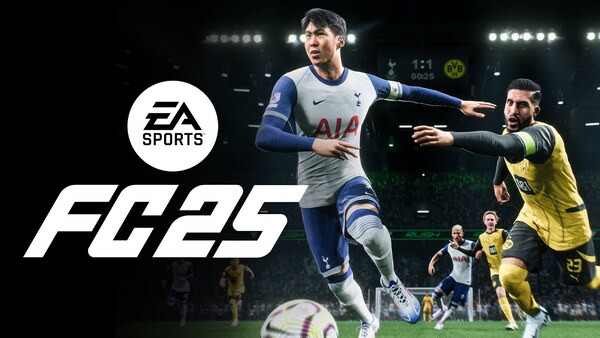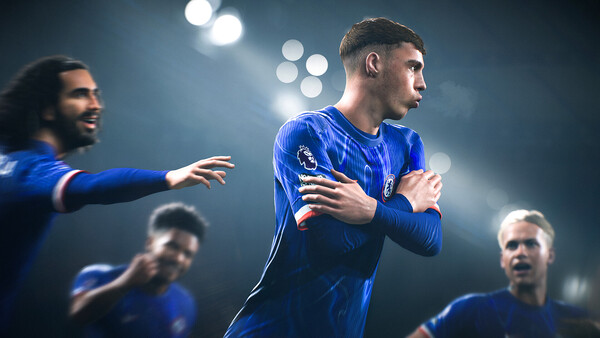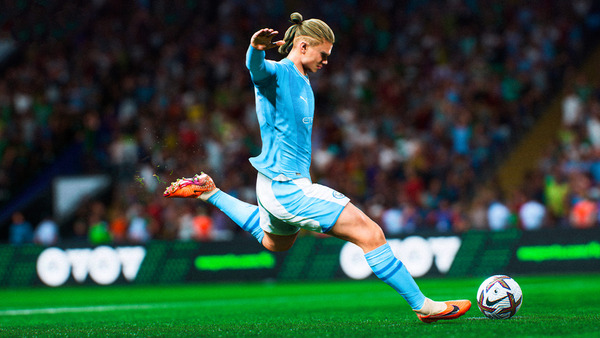Popular Now
EA Sports FC 25 introduces a fresh dimension to football gaming through its evolved PlayStyle+ system. While much attention has been given to new graphics, licenses, and gameplay improvements, this article takes a deep dive into one of the most critical strategic elements of the game: mastering Tactical Vision through the PlayStyle+ system. This mechanic isn’t just an aesthetic or gimmick—it fundamentally alters how players approach every match, from squad building to moment-to-moment decision-making on the pitch. If you want to dominate in both Career Mode and Ultimate Team, understanding and leveraging Tactical Vision is essential.
Let's break down this system from its conceptual roots to advanced applications, giving you the full playbook to outmaneuver even the most skilled opponents.
The Evolution of PlayStyle+: From Animation to Intelligence
In previous iterations of the FIFA franchise, player attributes were mostly tied to static stats—pace, dribbling, passing, and so on. FC 24 introduced PlayStyles to inject unique behaviors into the game, mimicking real-life football traits. FC 25 takes this concept further by layering Tactical Vision onto the PlayStyle+ system.
Tactical Vision assigns players a cognitive playstyle (Visionary, Dynamic, or Reactive) that affects how they read the game. It’s a deeper layer that goes beyond speed or strength; it’s about how players make decisions under pressure.
What makes FC 25 revolutionary is how this AI-driven system changes gameplay from being stat-reliant to intelligence-reliant. Choosing players is now about how they play, not just what numbers they carry.
Choosing Your Tactical Identity Early
Before a single match kicks off, FC 25 challenges you to think like a manager. Your Tactical Vision—Visionary, Dynamic, or Reactive—must align with your overall gameplay style. Each archetype affects passing tendencies, positional awareness, and pressure response.
Visionary players prioritize long passes, delayed runs, and unlocking space with high football IQ. Dynamic players are aggressive, with constant movement and quick transitions. Reactive players excel at intercepting, tracking runs, and counterattacking smartly.
Selecting a Tactical Vision is not just a cosmetic choice—it unlocks unique PlayStyle+ abilities for each player. Building your squad with this in mind creates a synergy that drastically improves performance.
Building a Squad Around Tactical Vision
The key to mastering Tactical Vision is understanding how it affects team chemistry and roles. For instance, using a Visionary midfielder like Kevin De Bruyne works best when paired with forwards who make intelligent, delayed runs rather than pure speedsters.
Your backline also needs alignment. A Reactive CB like Van Dijk will read the game better and intercept, but he won’t push high or start attacks unless supported by Dynamic fullbacks. Understanding this helps avoid mismatched playstyles that can cost you critical moments in matches.
H3: Tactical Synergy Matrix
To optimize team balance, build a Tactical Synergy Matrix:
-
Visionary + Reactive: Ideal for slow buildup and sudden counters
-
Dynamic + Visionary: Dominates transitions and midfield control
-
Reactive + Dynamic: Excellent for high-press countering systems
Unlocking and Upgrading PlayStyle+ Abilities
Each Tactical Vision archetype has its own set of elite PlayStyle+ traits, which are unlocked based on experience, match performance, and training sessions in Career Mode or Evolution upgrades in Ultimate Team.
For example, Visionary players can unlock "Threaded Vision+,” enabling unreal precision on through balls under pressure. Dynamic archetypes gain "Rapid Shift+,” which enhances ball control during high-speed transitions. Reactive types can earn "Tactical Interceptor+,” boosting interception animations and decision speed.
These traits are more than just buffs—they’re game-changing abilities that show up in clutch moments.
Training Modules and Tactical Drills
One of the most practical ways to improve Tactical Vision is through the revamped training system. FC 25 includes specific Tactical Drills designed around your chosen Vision type.
For example:
-
Visionary: Advanced passing grids, time-release through balls
-
Dynamic: Sprint-dribble modules, high-press reaction drills
-
Reactive: Zonal defending, interception targeting

H4: Custom Weekly Plans
Customizing training plans ensures that players with low Tactical Awareness can improve faster. Include at least two Tactical Drills per week to enhance their game IQ.
Adapting Tactical Vision to Opponent Strategy
What makes Tactical Vision especially powerful is its adaptability. Unlike previous games where AI was mostly reactive, FC 25 allows you to use your squad’s Vision to anticipate and neutralize the opponent’s strategy.
Facing a team full of Dynamic attackers? Assign a midfield core of Reactive players to cut off passing lanes. Going up against a low block? Use Visionary creators to manipulate space and wait for the perfect pass.
Matchday adjustments in the pause menu even let you toggle Tactical Roles, shifting your players’ Vision behaviors dynamically—if you’ve trained them well enough.
Impact on Career Mode Development
In Career Mode, Tactical Vision not only affects gameplay but player growth. A young player with a Dynamic profile can be retrained into a Visionary, although it takes longer and requires a different training pathway.
Youth scouts can also now prioritize players based on Tactical IQ traits, meaning smarter players can be discovered even if they’re not athletic prodigies. This shifts the focus from pure physicality to footballing intelligence.
H3: Long-Term Development Tips
-
Use Position Conversion sparingly to retain Vision traits
-
Monitor Match Ratings—Vision-based decisions improve ratings faster
-
Promote Tactical Drill specialists from the youth academy
Ultimate Team: Building a Meta Around Vision
In Ultimate Team, Tactical Vision brings a new layer of meta strategy. Instead of stacking icons and high-stat players, top-tier squads are now constructed around Vision coherence.
A team filled with Visionary players may dominate passing stats but struggle against aggressive pressers. On the flip side, a Reactive-heavy squad might lack creative spark. Balance is critical, and the new Evolution paths allow you to re-skill players toward different Tactical Visions.
H4: Suggested Vision Archetypes by Position
-
Striker: Dynamic or Visionary
-
CAM: Visionary
-
CDM: Reactive
-
Fullbacks: Dynamic
-
CB: Reactive
Common Mistakes When Using Tactical Vision
Despite its advantages, Tactical Vision can backfire when misunderstood. Many players assume faster or more skillful players automatically perform better—yet FC 25 penalizes mismatched Visions.
A Dynamic winger in a Visionary-based system may overrun plays or be caught offside. Likewise, Reactive defenders without the necessary intelligence rating may mistime interceptions.
Avoid these pitfalls:
-
Don’t overload one Vision type
-
Train Vision traits early
-
Avoid using PlayStyle+ boosts on incompatible players
Advanced Strategies: In-Game Tactical Shifts
FC 25 allows real-time Tactical Shifts through the d-pad or the pause menu. If your initial Tactical Vision isn’t working, you can switch roles mid-match, changing your striker from Dynamic to Visionary, for instance, if you need more finesse and fewer runs.
Advanced players use this to control the match tempo, forcing opponents to react instead of dictating terms. This is particularly effective in FUT Champs, where matchups vary wildly.
H3: Tactical Vision Shifts by Scenario
-
Leading in the final minutes: Shift to Reactive
-
Need a goal late: Switch CAM to Visionary
-
Facing aggressive high press: Use Dynamic fullbacks for outlet runs
Conclusion
EA Sports FC 25 revolutionizes football gaming with Tactical Vision and the PlayStyle+ system, making intelligence the new meta. Understanding how each Vision type behaves, synergizes, and evolves is no longer optional—it’s essential for competitive play. Whether you’re managing a team in Career Mode or building a powerhouse in Ultimate Team, Tactical Vision offers unmatched depth and immersion. By mastering these layers, you’ll not only play better—you’ll think better on the pitch.


















